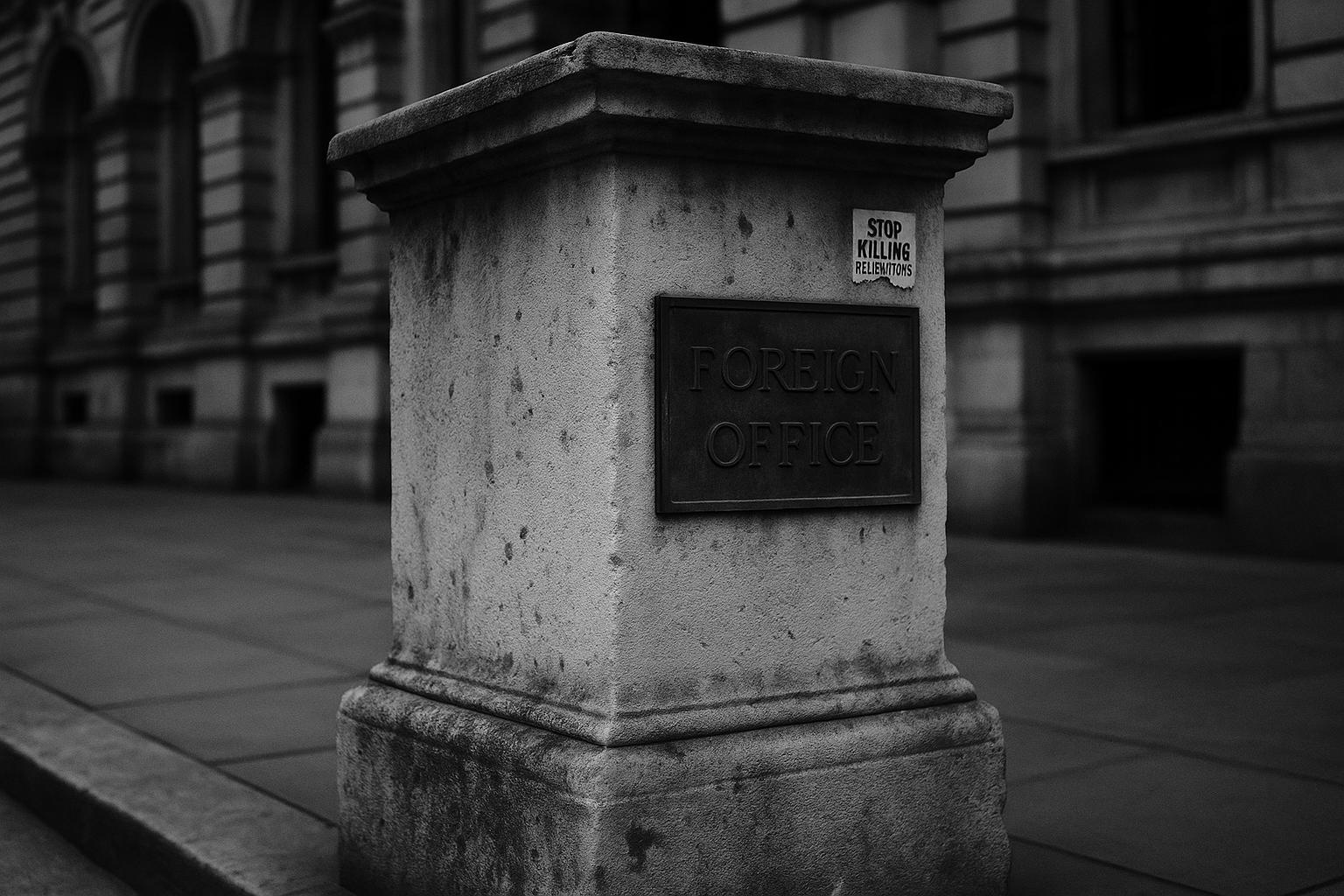A Labour peer has urged that the statue of Robert Clive outside the Foreign Office in Whitehall should be removed, saying its imagery presents a misleading and damaging account of Britain’s imperial past. According to the original report in the Express, Baroness Thangam Debbonaire told a panel at the Edinburgh International Book Festival that the Grade II-listed bronze and its friezes show “happy, smiling people really delighted to see him”, a depiction she said is “not historically accurate” and “deeply unhelpful” to Britain’s relationship with India.
The memorial in question is John Tweed’s bronze figure of Clive, completed in 1912 and re-sited to King Charles Street in 1916, now standing on a plinth carved with three bronze reliefs depicting episodes from Clive’s career: the Siege of Arcot, the Battle of Plassey and the Treaty of Allahabad. English Heritage’s public catalogue records the work’s long association with the India Office and explains why it is designated as a Grade II-listed monument. The statue’s history and these details are also summarised in public reference entries.
Baroness Debbonaire is a recently ennobled Labour peer who served as the MP for Bristol West from 2015 until 2024 and held shadow frontbench roles, including a spell as shadow culture secretary under Sir Keir Starmer, before her elevation to the House of Lords. Media briefings note her former position in Labour’s cultural team and place her intervention in the context of her continuing engagement with questions of public memory.
Her central contention is that the sculptural programme around Clive sanitises the violence and extraction associated with the expansion of British rule in India and that its placement outside the Foreign Office is particularly problematic. Speaking at the festival she said she was “not sure that a statue of Clive should really have any place outside the Foreign Office”, arguing the reliefs give a distorted impression that Britain “civilised” India — a framing she said could be harmful to diplomatic relations and to visiting Indian dignitaries.
The call fits into a wider, now familiar national debate about imperial monuments that intensified after 2020. Coverage across national titles has framed the Clive statue as part of that contested landscape, where campaigners, historians and some politicians have pushed for removal, recontextualisation or relocation of memorials that appear to celebrate colonial violence, while others argue for retention as part of history. The discussion has repeatedly returned to how best to balance remembrance, accountability and public space.
Any prospect of removal faces legal and procedural hurdles because the memorial is listed. Reporting of earlier disputes — notably the prolonged controversy over a separate Clive statue in Shrewsbury in 2020 — underlined the difficulties councils and authorities encounter when considering action on listed monuments. Those cases demonstrate that taking down a Grade II monument is not simply a matter of local will; it normally requires engagement with heritage authorities and specific legal processes. English Heritage’s description of the Whitehall statue and public records of its listing help explain why official consent would be a necessary step.
Public debate about options has ranged across removal, relocation, additional interpretation and retention with explanatory plaques; commentators and campaigners have advocated different mixes of those responses. According to contemporary reporting, proposals often prompt renewed political and civic argument about how the nation remembers empire and whose voices are foregrounded in public spaces.
Whatever the short-term outcome, the episode highlights the diplomatic as well as the domestic dimensions of Britain’s reckoning with its imperial past. A decision about the statue would not only involve heritage procedures but would also reopen familiar disputes over history, identity and how the state chooses to present its past in the heart of government London.
📌 Reference Map:
##Reference Map:
- Paragraph 1 – [1], [2], [3]
- Paragraph 2 – [4], [6]
- Paragraph 3 – [5], [2]
- Paragraph 4 – [1], [2], [3]
- Paragraph 5 – [3], [2], [7]
- Paragraph 6 – [7], [4], [6]
- Paragraph 7 – [2], [3], [7]
- Paragraph 8 – [2], [4], [7]
Source: Noah Wire Services
